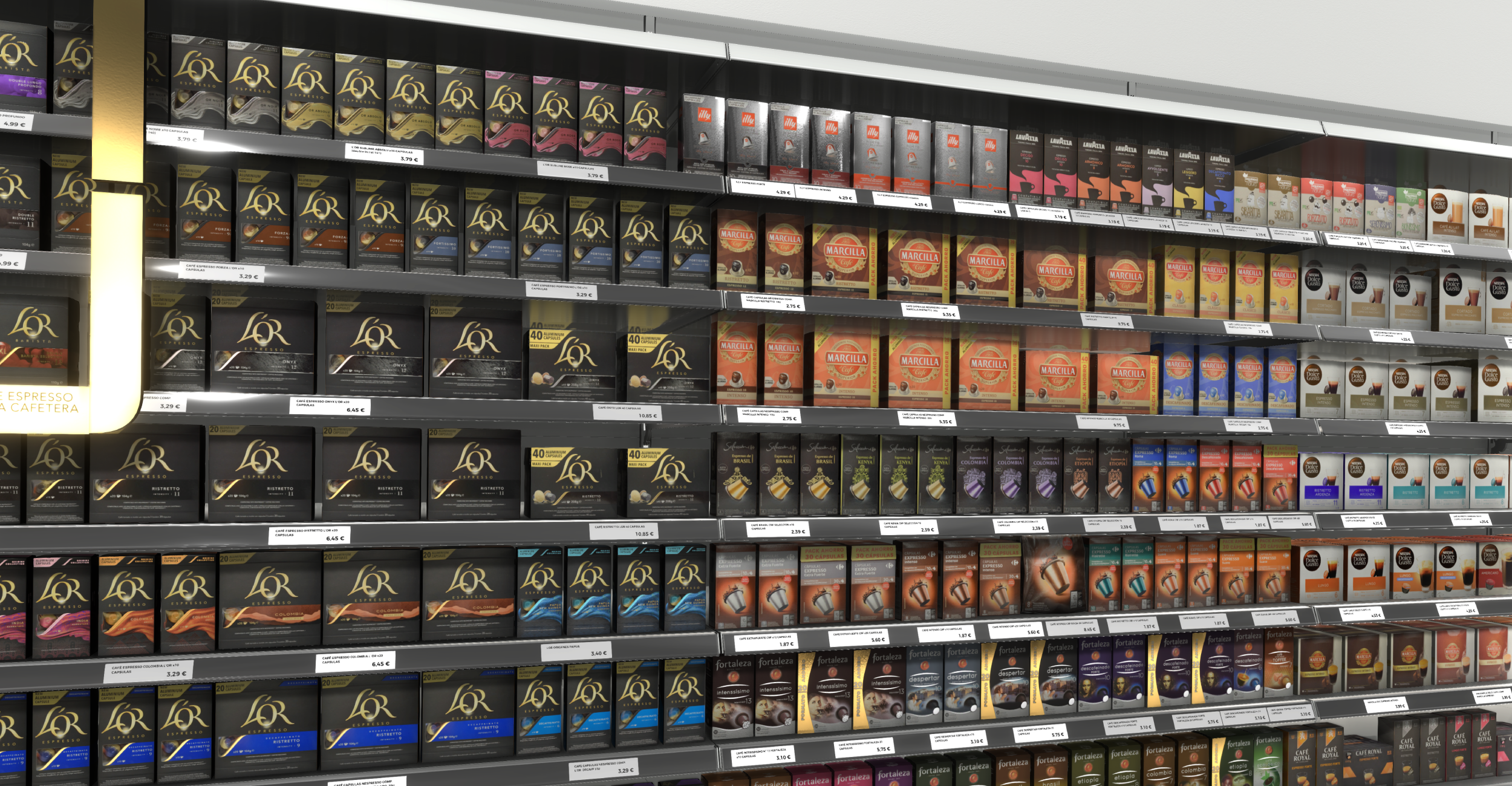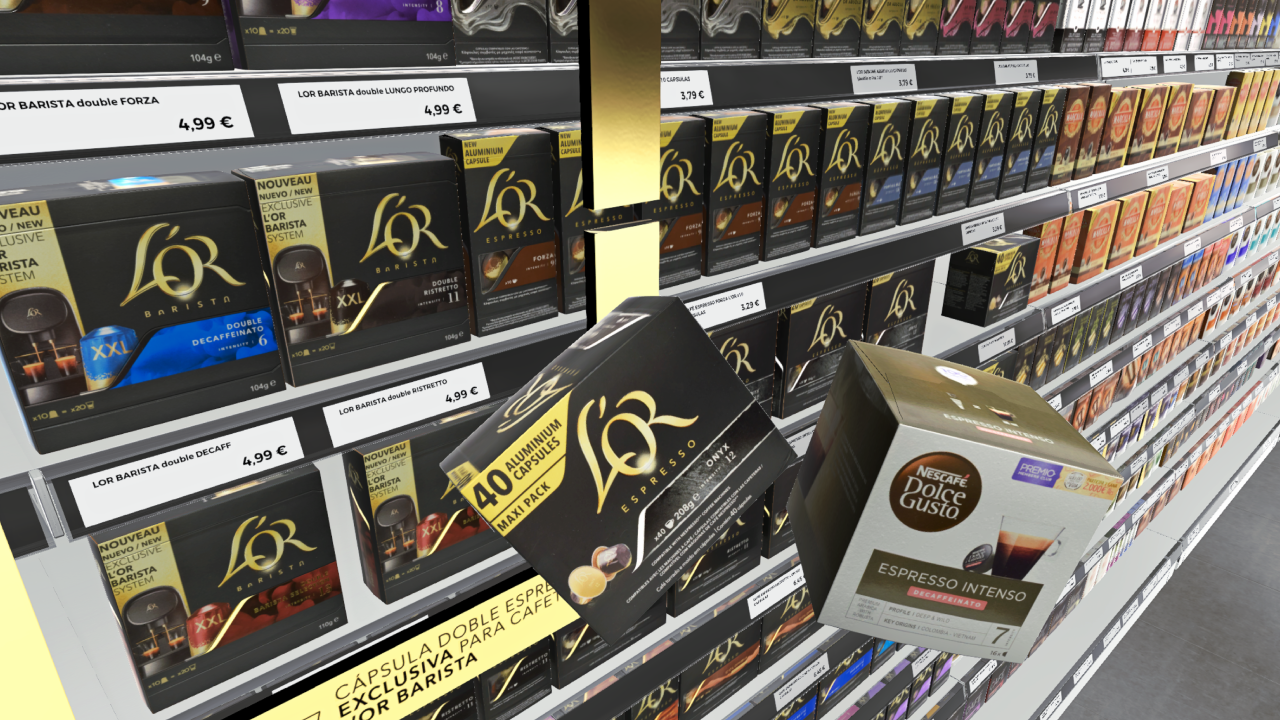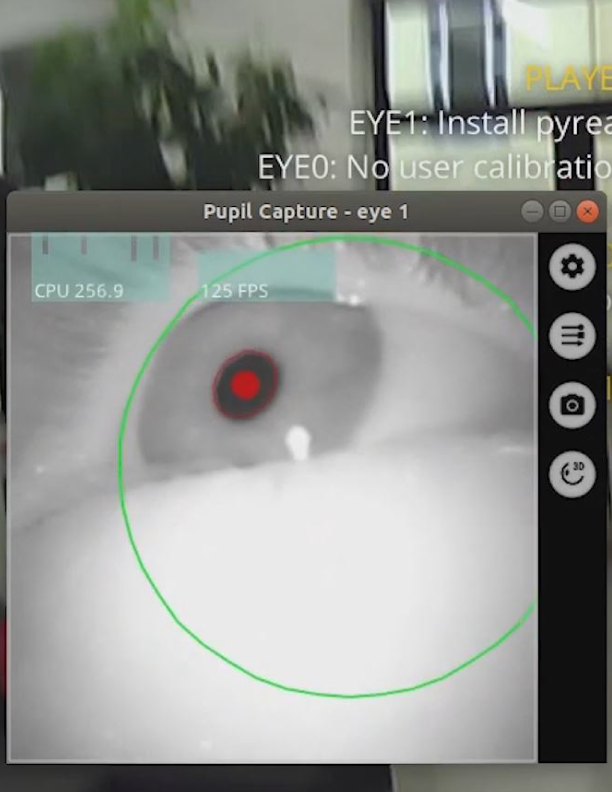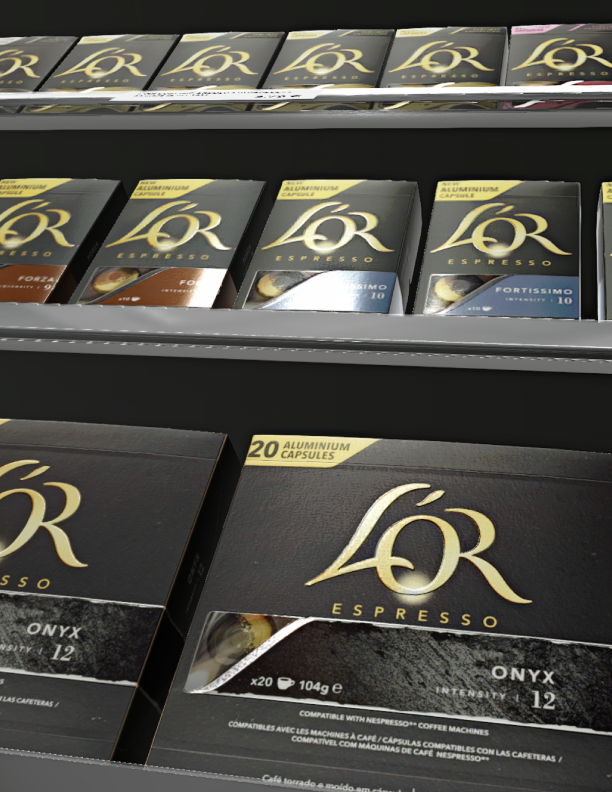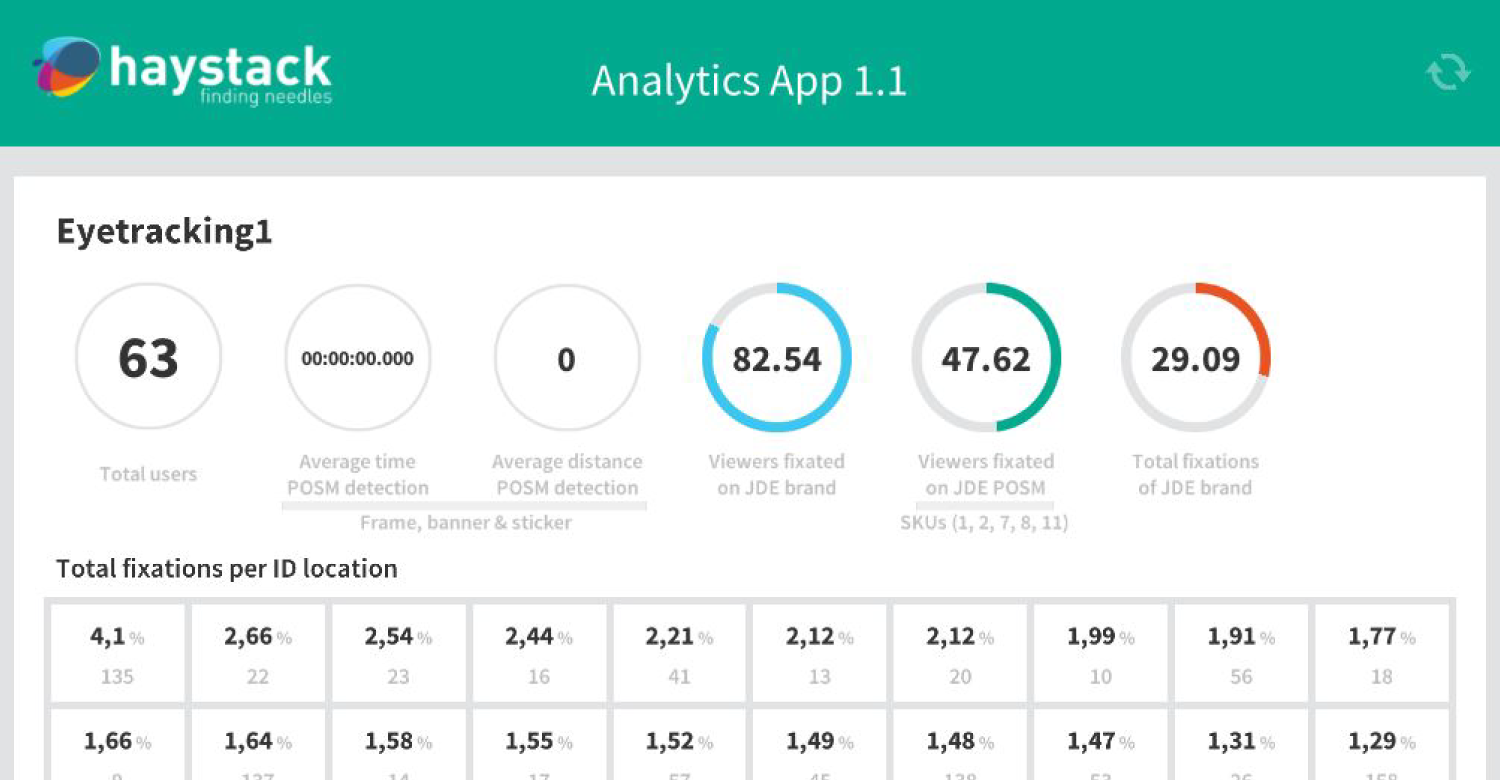Project highlights
The grunt behind shelftesting
Shelftest have been a powerful market research tool for a long time. Haystack offers these shelftests as a service to their clients to evaluate packaging designs, new products, point-of-sale materials and so on. Using these test they have been able to asses the performance of various products and concepts for their clients. The way to do this had always been the same. First conceptualize the test itself, then design the shelf and make a planogram listing and positioning each SKU to be tested. After this, each SKU has to be made into one or more mock-ups, a prototype that will serve as the real thing in our test. This is a very time consuming proces which includes researching, photographing, designing and actually producing, in this case, mock-up packagings. At this point, the test still hasn’t begun.
“Virtual assets don’t abide by the rules of time and space, they’re always at your fingertips”
XR performance gains and cost reductions.
When all the input material is ready, a testing environment still has to be built. A very important step as the environment will ‘prime’ peoples emotions and the way they will react. Shelves have to be sourced, pricetags have to be designed, printed and placed on the shelves. Finally we get to where the shelves get filled with the products according to the planogram. At this point, everything is ready to start performing the experiments. It is clear that shelftesting was a very timeconsuming and costly exercise. Doing all of this in a digital / virtual environment with virtual assets is a logical next step. What we used to do serially can now be performed in parallel, copies and variants at no added cost, total control of the environment, perfect tracking of data, need we go further? Virtual assets don’t abide by the rules of time and space, they’re right there.. at your fingertips!
Analytics and insight on the fly
Another important reason to test and evaluate in a virtual space are the possibilities towards tracking and measuring data. In the virtual world we measure any metric with perfect resolution, eye-tracking data are an obvious one, but we could virtually track anything really. Haystack’s researchers typically still had the bulk of the work ahead of them, processing the results and the data, analyzing patterns and presenting their findings. In our application, all hits and fixations of the user‘s gaze and the tested SKU’s were registered. The researchers could then generate the test results, analyzed and packaged in a visual overview, at the push of a button.
“We can generate the test results, analyzed and packaged in a visual overview, at the push of a button”
Realism and validity
The level of realism in this type of exercise is enormously consequential. We want to take away the laboratory setting and replace it with the real thing, the supermarket in this case, as convincingly as we can, to mimic the experience the subject would have in real life and let him/her experience that instead of a test. The results and the validity of those results, depend a lot on this question: was the subject convinced (visually, physically, emotionally, ...) he/she was experiencing the intended environment? The more this question rings true, the better the test. At Aeroplane we pride ourselves in the quality and level of realism in our work.
“We tested the performance of POS material to increase product visibility in a retail environment”
The test
In this test, we wanted to get a better view on the following: “Does our point-of-sale material increase the visibility of our packaging and product offerings in a retail environment? If so, which point-of-sale concept exhibits the highest performance? The test was performed by Haystack in Barcelona and Madrid, for the spanish market. Two POS-concepts were tested against a ‘normal’ setting with no POS material. Aside from that, we tracked what the user did look at, and how long. By doing that, we noticed a few other interesting insights.
An ongoing conversation
It is clear that XR technologies will continue to add value and incraese performance in many activities troughout the fields of market research. Together with Haystack, we plan to keep pushing the boundaries and look for new value propositions in market and user research as wel as storytelling and advertising.
